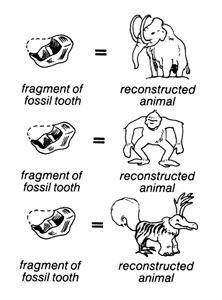Science
Related: About this forumChilesaurus: New Dinosaur Species Discovered In Chile
Chilesaurus, an entirely new dinosaur species, was apparently the Mr. Potato Head of the Late Jurassic. As described today in a study in the journal Nature, Chilesaurus had the teeth of an apatosaur, the arms of an allosaur and the axial skeleton of a ceratosaur. A member of the theropod clade, Chilesaurus was essentially an adorable, turkey-sized, vegetarian T-Rex.
“It’s a new species, genus and completely new lineage of dinosaurs that wasn’t known before,” says Martín Ezcurra, a doctoral researcher at the University of Birmingham and coauthor of the study. “Theropods were quite common during the Mesozoic, but in this part of Chile, this is the first plant-eating theropod dinosaur.”
Seven-year-old Diego Suarez initially stumbled across the Chilesaurus fossils in 2005, while hiking with his parents near the Andes mountains. The skeletons were remarkably complete, but paleontologists were less excited—they assumed that Suarez had discovered several different species of well-known theropods. It was only in 2008, when scientists looked more closely at the findings, that they realized the skeletons likely represented an entirely new, albeit enigmatic, species.
“The most interesting thing about this new dinosaur is that different parts of the body resemble different, unrelated groups,” Ezcurra says. “It show us how convergence evolution works.” (Convergence evolution is when organisms evolve certain traits independently, due to having to contend with similar conditions—not a common ancestry).
more
http://www.vocativ.com/culture/science/chilesaurus-new-dinosaur/
Scootaloo
(25,699 posts)Cleita
(75,480 posts)I grew up in a mining camp in the Atacama Desert near the Andes. I found all kinds of fossilized sea life, like shells, in the hills behind my house and this was at eleven thousand feet altitude. Millions of years ago, it must have been an ocean bottom. There were fossilized bones too of some kinds of animals. As a child I wouldn't know what they were but have often wondered over the years why the scientific communities, like paleontologists who delve in the past, haven't done studies of the area like they do in Africa.
eppur_se_muova
(36,266 posts)Perhaps you should invite Paul Sereno to have a look. He's headed two expeditions to fossil sites in Argentina. If you have photos, or relatives in the area who could send photos, just email those to him. Just don't try to remove any fossils from the ground, that does more harm than good !
There've been many dinosaurs discovered in SA, mostly in Argentina, and there are several Argentinian paleontologists of considerable reputation, mostly students of Jose Bonaparte. Haven't heard so much about paleontology in Chile -- economic factors ? political ? Would an Argentinian researcher be likely to get access to Chilean sites, or is there bad blood there ?
Or maybe you can find some radio astronomer with an interest in paleontology -- they visit the Atacama to use ALMA.
Cleita
(75,480 posts)Even the town I lived in has been blasted away and dug up. But there still is thousands of square miles of untouched desert that probably has similar fossils if it was in fact the bottom of an ancient ocean and maybe later a primordial swamp as the Andes rose and pulled it up. As far as the Argentinians, there is bad blood now and then but not always. Chile and Argentina are like quarrelsome lovers, who fight and then kiss and make up and then fight again.
I just think it might be the expense. There would be very little in the way of water and food to set up a dig. The Atacama has practically no rainfall so it's very barren and sparsely populated, even more so than the Sahara, so everything would have to be transported and that might involve building roads and bridges. However, the astronomers persevered and built some fabulous telescopes in the middle of nowhere not far from my area, using the engineers from the mines I once knew, from what I understand. So I suppose the problem is money and the need to explore first.
Judi Lynn
(160,542 posts)Last edited Mon Apr 27, 2015, 03:38 PM - Edit history (1)
Monday, April 27, 2015
Chilesaurus, A Plant-Eating Theropod from Chile
An enigmatic plant-eating theropod from the Late Jurassic period of Chile. 2015. Novas, F., et al. Nature.
[center] [/center]
[/center]
Chilesaurus diegosuarezi is a new, bizarre herbivorous basal tetanuran from the Upper Jurassic of Chile discovered at Aysén, a fossil locality in the Upper Jurassic Toqui Formation of southern Chile. The site yielded abundant and exquisitely preserved three-dimensional skeletons of small archosaurs. Several articulated individuals of Chilesaurus at different ontogenetic stages have been collected, as well as less abundant basal crocodyliforms, and fragmentary remains of sauropod dinosaurs (diplodocids and titanosaurians).
Chilesaurus had robust forelimbs similar to Jurassic theropods such as Allosaurus, although its hands were provided with two blunt fingers, unlike the sharp claws of fellow theropod Velociraptor. Chilesaurus' pelvic girdle resembles that of the ornithischian dinosaurs.
Chilesaurus can be considered a 'platypus' dinosaur because different parts of its body resemble those of other dinosaur groups due to mosaic convergent evolution. PR
Posted by Michael J. Ryan, Ph.D. at 1:39 PM
http://palaeoblog.blogspot.com/2015/04/chilesaurus-plant-eating-theropod-from.html
(Short article, no more at link.)
central scrutinizer
(11,650 posts)[link: |
|
NickB79
(19,253 posts)Interesting, seeing as therizinosaurs were most common in the Cretaceous of N. America and Asia.